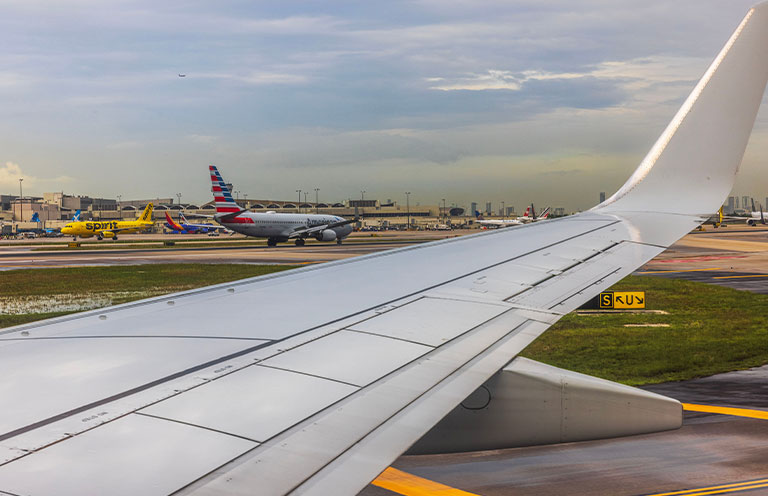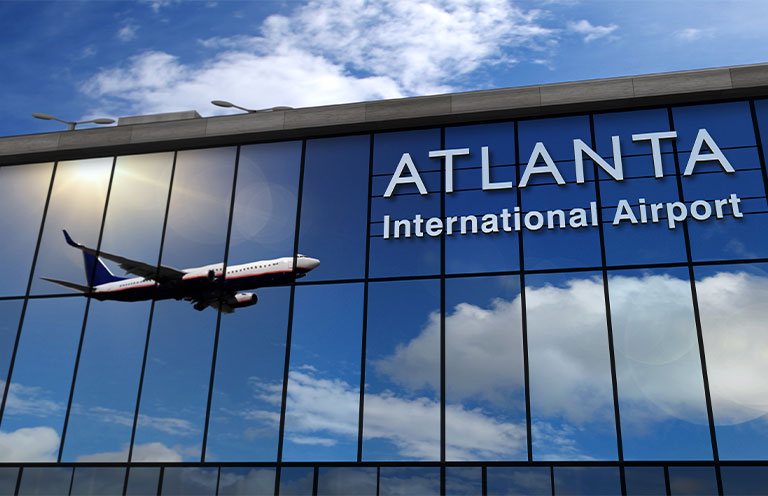The Rise of Delayed Flights: What Travelers Need to Know
Why so many flights are running late—and what travelers can do to avoid the worst of it


We all hope our flight isn't delayed—or worse, caught in a rolling delay where the departure time keeps getting pushed back in small increments all afternoon. Nevertheless, whether due to thunderstorms, staffing issues, or maintenance hiccups, delayed flights are commonplace and can happen anytime. Sometimes, though, flight delays can be more predictable than you think.

What really counts as a flight delay?
First, not all flight delays are created equal—and not all make it into official government statistics. To be officially listed as “delayed,” a flight must meet several criteria by the US Department of Transportation (DOT).
- Only significant delays count: The flight must arrive more than 30 minutes late.
- Cancellations and diversions: Those are not included in delay stats.
- Consistency matters: Only flights that were delayed more than 50 percent of the time in a given month are flagged.
- Frequency matters: The flight must have been scheduled and operated at least 10 times that month to be counted.
This means a flight could feel notoriously late to passengers but still not appear on the government’s radar—especially if it’s delayed just under the threshold or doesn’t fly often enough.
Also keep in mind: While a flight may be described as “delayed” in everyday terms, passengers' on-the-ground experiences can vary widely. In December, for example, some flights had an average delay of under 45 minutes, while others were delayed by more than nine hours.

The worst offenders of flight delays
The Bureau of Transportation produces a monthly report that identifies chronically delayed flights. These reports list the routes and carriers with more than 50 percent delayed arrivals exceeding 30 minutes. It’s a handy tool to learn which routes are ones you might want to avoid during specific months.
For instance, the December 2024 report revealed that nearly all of the legacy carriers based in the US—such as American, United, Delta, JetBlue, and Southwest—made it into the month’s top 10 most delayed flights. JetBlue dominated the list with five of the top 10 most delayed flights, including the top spot.
No. 1 most delayed flight
JetBlue 719
Route: Boston to Miami
Amount of flights delayed: 92 percent (12 of 13)
Average delay: 81 minutes
No. 2 most delayed flight
American Airlines 6457 (Operated by SkyWest)
Route: Chicago to Aspen
Amount of flights delayed: 91 percent (10 of 11)
Average delay: 103 minutes
No. 3 most delayed flight
American Airlines 6482 (Operated by SkyWest)
Route: Aspen to Austin
Amount of flights delayed: 85 percent (11 of 13)
Average delay: 144 minutes

Government scrutiny over delayed flights
Flight delays aren’t just frustrating; they’re now making national news. The number of chronically delayed flights, as defined by the DOT, has remained significant enough to prompt government lawsuits and enforcement actions in recent years.
JetBlue paid $2 million in civil penalties after landing on the DOT’s radar. The DOT alleged that JetBlue operated four chronically delayed routes—including one between New York and North Carolina, as well as several flights out of Fort Lauderdale. Budget airline Frontier was fined $650,000 for a similar violation.
Under DOT rules, a flight is considered chronically delayed if it meets the delay criteria (outlined above) for four or more consecutive months. When a flight is chronically delayed, airlines are prohibited from marketing the flight.

How to minimize your chances of a flight delay
While some delays are simply out of your control, there are smart ways to stack the odds in your favor and keep your travel plans on track.
Be strategic when booking your flight.
Look for routing that avoids weather trouble spots. In the summer, for instance, steer clear of connections through thunderstorm-prone regions such as Florida. In winter, avoid hubs known for heavy snow.
Book morning flights whenever possible.
Not only is the weather typically calmer earlier in the day, but morning departures also protect you from delays caused by earlier flight delays. Since your plane likely spent the night at the gate, it will be ready to go.
Choose your connections wisely.
When choosing a connecting flight in the winter, avoid airports that get significant snowfall. For example, instead of connecting through Chicago with United, try Houston. Instead of flying through Minneapolis aboard Delta, opt for Atlanta.
. . . . .
Use these strategies along with ensuring that the next flight you book isn’t on the DOT’s chronically delayed list to increase your chances of a smooth, stress-free journey.
